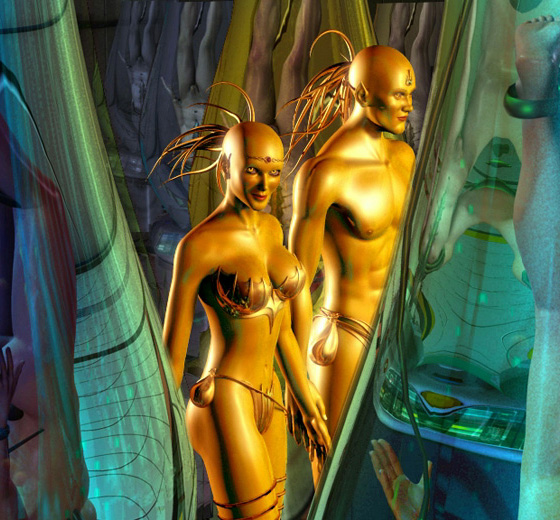As part of their special issue on evolution, Scientific American takes a look at how humans might be evolving into the future. I find this interesting, for many reasons.
It seems to me, irrespective of this article, that Western humans might be devolving physically. For the first time we know of, the projected lifespan for those born today may not be as long as their parents or grandparents. Our health habits, or lack thereof, are beginning to have an inter-generational impact on our bodies at the DNA level. This is not good.
At the same time, our interior worlds, both individual and collective, continue to evolve toward more compassion and greater complexity. After a minor setback over the last eight years or so, that growth pattern seems to be re-emerging in the election of our first black president and the struggle to give all human beings equal rights under the law.
The conflict between inner and outer evolution is intriguing.
Anyway, here is the article from Sci Am.
The Future of Man--How Will Evolution Change Humans?
Contrary to popular belief, humans continue to evolve. Our bodies and brains are not the same as our ancestors' were—or as our descendants' will be
By Peter Ward
Key Concepts
- People commonly assume that our species has evolved very little since prehistoric times. Yet new studies using genetic information from populations around the globe suggest that the pace of human evolution increased with the advent of agriculture and cities.
- If we are still evolving, what might our species look like in a millennium should we survive whatever environmental and social surprises are in store for us? Speculation ranges from the hopeful to the dystopian.
When you ask for opinions about what future humans might look like, you typically get one of two answers. Some people trot out the old science-fiction vision of a big-brained human with a high forehead and higher intellect. Others say humans are no longer evolving physically—that technology has put an end to the brutal logic of natural selection and that evolution is now purely cultural.
The big-brain vision has no real scientific basis. The fossil record of skull sizes over the past several thousand generations shows that our days of rapid increase in brain size are long over. Accordingly, most scientists a few years ago would have taken the view that human physical evolution has ceased. But DNA techniques, which probe genomes both present and past, have unleashed a revolution in studying evolution; they tell a different story. Not only has Homo sapiens been doing some major genetic reshuffling since our species formed, but the rate of human evolution may, if anything, have increased. In common with other organisms, we underwent the most dramatic changes to our body shape when our species first appeared, but we continue to show genetically induced changes to our physiology and perhaps to our behavior as well. Until fairly recently in our history, human races in various parts of the world were becoming more rather than less distinct. Even today the conditions of modern life could be driving changes to genes for certain behavioral traits.
If giant brains are not in store for us, then what is? Will we become larger or smaller, smarter or dumber? How will the emergence of new diseases and the rise in global temperature shape us? Will a new human species arise one day? Or does the future evolution of humanity lie not within our genes but within our technology, as we augment our brains and bodies with silicon and steel? Are we but the builders of the next dominant intelligence on the earth—the machines?
The Far and Recent Past
Tracking human evolution used to be the province solely of paleontologists, those of us who study fossil bones from the ancient past. The human family, called the Hominidae, goes back at least seven million years to the appearance of a small proto-human called Sahelanthropus tchadensis.Since then, our family has had a still disputed, but rather diverse, number of new species in it—as many as nine that we know of and others surely still hidden in the notoriously poor hominid fossil record. Because early human skeletons rarely made it into sedimentary rocks before they were scavenged, this estimate changes from year to year as new discoveries and new interpretations of past bones make their way into print [see “Once We Were Not Alone,” by Ian Tattersall; Scientific American, January 2000, and “An Ancestor to Call Our Own,” by Kate Wong; Scientific American, January 2003].
Each new species evolved when a small group of hominids somehow became separated from the larger population for many generations and then found itself in novel environmental conditions favoring a different set of adaptations. Cut off from kin, the small population went its own genetic route and eventually its members could no longer successfully reproduce with the parent population.
The fossil record tells us that the oldest member of our own species lived 195,000 years ago in what is now Ethiopia. From there it spread out across the globe. By 10,000 years ago modern humans had successfully colonized each of the continents save Antarctica, and adaptations to these many locales (among other evolutionary forces) led to what we loosely call races. Groups living in different places evidently retained just enough connections with one another to avoid evolving into separate species. With the globe fairly well covered, one might expect that the time for evolving was pretty much finished.
Read the rest of this fascinating article.
Tags:


No comments:
Post a Comment